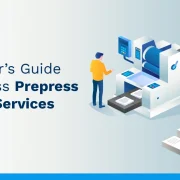Outcomes represent the measurable changes or results that occur for learners and educators as a direct consequence of engaging with educational content, technology, or learning programs. They go beyond simple completion rates and focus on demonstrating the impact of learning interventions on skills development, knowledge acquisition, behavioral changes, and overall educational advancement. By meticulously tracking and analyzing outcomes, Hurix Digital ensures its solutions are not only effective but also aligned with achieving specific educational goals and objectives, maximizing the return on investment for institutions and improving learning experiences for students.
What are Outcomes?
In the context of education, training, and digital learning solutions, outcomes refer to the measurable knowledge, skills, abilities, and attitudes that a learner is expected to demonstrate upon completion of a learning experience. They are the tangible results of instruction and represent what a learner should be able to do, know, or feel differently as a result of engaging with the material.
Outcomes are typically expressed as specific, observable, and measurable statements. They differ from learning objectives, which describe what the instructor intends to teach. Outcomes focus on the learner’s perspective and the impact of the learning process.
Well-defined outcomes are crucial for several reasons:
- Clear Expectations: They provide learners with a clear understanding of what is expected of them.
- Targeted Instruction: They guide the design of instructional materials and activities, ensuring they are aligned with desired results.
- Effective Assessment: They enable the development of appropriate assessment methods to measure learner achievement.
- Demonstrable Value: They allow for the evaluation of the effectiveness of learning programs and demonstrate the value of the investment in education and training.
By focusing on outcomes, Hurix Digital ensures that its digital learning solutions are designed to achieve specific, measurable, achievable, relevant, and time-bound (SMART) goals, ultimately leading to improved learner performance and organizational success.
Why are Outcomes Important?
In the context of Hurix Digital and the broader educational technology landscape, understanding the importance of outcomes is paramount. Simply put, outcomes are the measurable results or changes that occur as a direct consequence of a learning intervention or digital solution.
Outcomes matter because they provide tangible evidence of effectiveness. Without clearly defined and measured outcomes, it’s impossible to determine if a product, service, or learning program is achieving its intended purpose. Did the students improve their comprehension skills? Did the training program increase employee productivity? Outcomes provide the answers.
Focusing on outcomes allows for data-driven decision-making. By tracking and analyzing outcomes, educators and organizations can identify what’s working, what’s not, and make informed adjustments to improve the learning experience and achieve desired results. This iterative process of measurement and refinement is crucial for continuous improvement and optimizing the return on investment in educational technologies.
Furthermore, a strong emphasis on outcomes promotes accountability. It holds educators, developers, and organizations responsible for delivering solutions that demonstrably impact learners and contribute to meaningful progress. Whether it’s improved test scores, increased engagement, or enhanced job performance, clearly defined outcomes provide a benchmark against which success can be measured and communicated to stakeholders, including students, parents, and investors. By prioritizing outcomes, Hurix Digital ensures its solutions deliver real, measurable value.
How Does “Outcomes” Work?
At Hurix Digital, “Outcomes” refers to the measurable results and impact that our learning solutions and services deliver for our clients. It’s about moving beyond simply delivering content and focusing on the tangible improvements in knowledge, skills, performance, and overall business results.
Our approach to “Outcomes” involves a structured process:
- Needs Analysis: We begin by deeply understanding your specific business goals and the challenges you face. This includes identifying the desired changes in employee behavior, performance metrics, and organizational objectives.
- Solution Design: Based on the needs analysis, we design learning solutions tailored to achieve those specific outcomes. This involves selecting the right modalities (eLearning, blended learning, microlearning, etc.), developing engaging content, and incorporating interactive elements that promote knowledge retention and application.
- Implementation & Tracking: We implement the learning solution and meticulously track key performance indicators (KPIs) throughout the process. This may include tracking learner engagement, completion rates, assessment scores, and on-the-job performance improvements.
- Measurement & Analysis: We analyze the data collected to determine the effectiveness of the learning solution in achieving the desired outcomes. This involves comparing pre- and post-training performance, gathering feedback from learners and stakeholders, and identifying areas for improvement.
- Optimization: Based on the analysis, we continuously optimize the learning solution to maximize its impact and ensure that it continues to deliver the desired outcomes. This is an iterative process that involves making adjustments to content, delivery methods, and assessment strategies.
By focusing on “Outcomes,” we ensure that our solutions are not just engaging and informative, but also directly contribute to your organization’s success. We help you achieve a measurable return on your investment in learning and development.
Outcomes: Leading Brands in Action
The pursuit of measurable outcomes is no longer a buzzword but a cornerstone of successful strategies for leading brands across industries. These companies are leveraging data and technology to define, track, and achieve specific results, demonstrating the tangible value of their efforts. Here are a few examples:
Netflix: Moving beyond subscriber count, Netflix focuses on engagement metrics like viewing hours per user and completion rates of series. This allows them to optimize content recommendations, personalize user experiences, and ultimately, increase customer lifetime value.
Amazon: Amazon relentlessly concentrates on customer satisfaction and loyalty, measured through metrics such as Net Promoter Score (NPS) and repeat purchase rates. Their investment in prompt delivery, personalized recommendations, and seamless customer service directly correlates with positive outcomes in these key performance indicators.
Salesforce: Salesforce emphasizes customer relationship improvement and sales growth for their clients. They track metrics like lead conversion rates, sales pipeline velocity, and customer retention rates. By demonstrating quantifiable improvements in these areas, they validate the ROI of their CRM platform.
Nike: Nike uses outcomes to drive sustainability initiatives. They track their environmental impact by focusing on metrics like carbon footprint reduction, water usage, and waste reduction across their supply chain. This focus aligns with growing consumer demand for environmentally conscious brands, improving brand reputation and long-term resilience.
These examples highlight how defining and tracking relevant outcomes provides brands with valuable insights, enabling them to optimize their strategies, improve customer experiences, and achieve sustainable growth.
Key Benefits of Outcomes
Understanding and focusing on “Outcomes” offers significant benefits across various aspects of learning and development, performance management, and overall organizational strategy. By prioritizing outcomes, we shift the focus from mere activity completion to achieving tangible, measurable results. Here are some key benefits:
- Improved Clarity and Alignment: Defining desired outcomes clarifies the goals and objectives, ensuring everyone understands what success looks like. This alignment, in turn, enhances collaboration and efficiency.
- Enhanced Accountability: When outcomes are clearly defined, accountability becomes easier to establish and track. Progress can be monitored against specific targets, allowing for timely interventions and adjustments.
- Measurable Progress and ROI: Outcome-based approaches provide quantifiable data, enabling organizations to measure the return on investment (ROI) of training programs, performance initiatives, and other strategic endeavors. This data-driven insights facilitate continuous improvement.
- Increased Motivation and Engagement: When individuals understand how their work contributes to achieving specific outcomes, they are more likely to be motivated and engaged. A sense of purpose drives higher performance and job satisfaction.
- Data-Driven Decision Making: Tracking outcomes provides valuable data that informs future decisions. By analyzing what works and what doesn’t, organizations can optimize their strategies and resource allocation.
- Better Learning Experience: By focusing on what learners should be able to do after training, we can design more relevant and effective learning experiences.
Ultimately, a focus on outcomes allows Hurix Digital and our clients to achieve better results, optimize resource allocation, and foster a culture of continuous improvement.
Common Misconceptions Around Outcomes
The term “outcomes” in education and digital learning is often misunderstood. Clearing up these misconceptions is crucial for effectively leveraging outcomes-based learning and assessment.
Misconception 1: Outcomes are solely about grades. While grades can reflect achievement, outcomes encompass a broader range of skills, knowledge, and attitudes. They define what a learner should be able to do, not just what they remember or regurgitate. Focusing solely on grades overlooks critical aspects like critical thinking, problem-solving, and collaboration.
Misconception 2: Outcomes are easily measurable with standardized tests. Standardized tests may assess certain aspects, but they often fail to capture the depth and complexity of higher-order skills. Effective outcomes assessment often requires diverse methods like portfolios, projects, and performance-based tasks.
Misconception 3: Outcomes are fixed and inflexible. Learning is a dynamic process. While overarching program outcomes provide direction, individual learning outcomes should be adaptable to learner needs and contextual changes. Periodic review and refinement are essential.
Misconception 4: Defining outcomes is the same as defining activities. An activity describes what a learner *does* (e.g., writing an essay). An outcome describes what a learner *can do* as a result of that activity (e.g., effectively communicate a complex argument in writing). Outcomes focus on the lasting impact of learning experiences.
Misconception 5: More outcomes mean better learning. A long list of loosely defined outcomes can be overwhelming and ineffective. Prioritize key outcomes that align with overall learning goals and ensure they are clearly articulated and measurable. Focus on depth over breadth.




